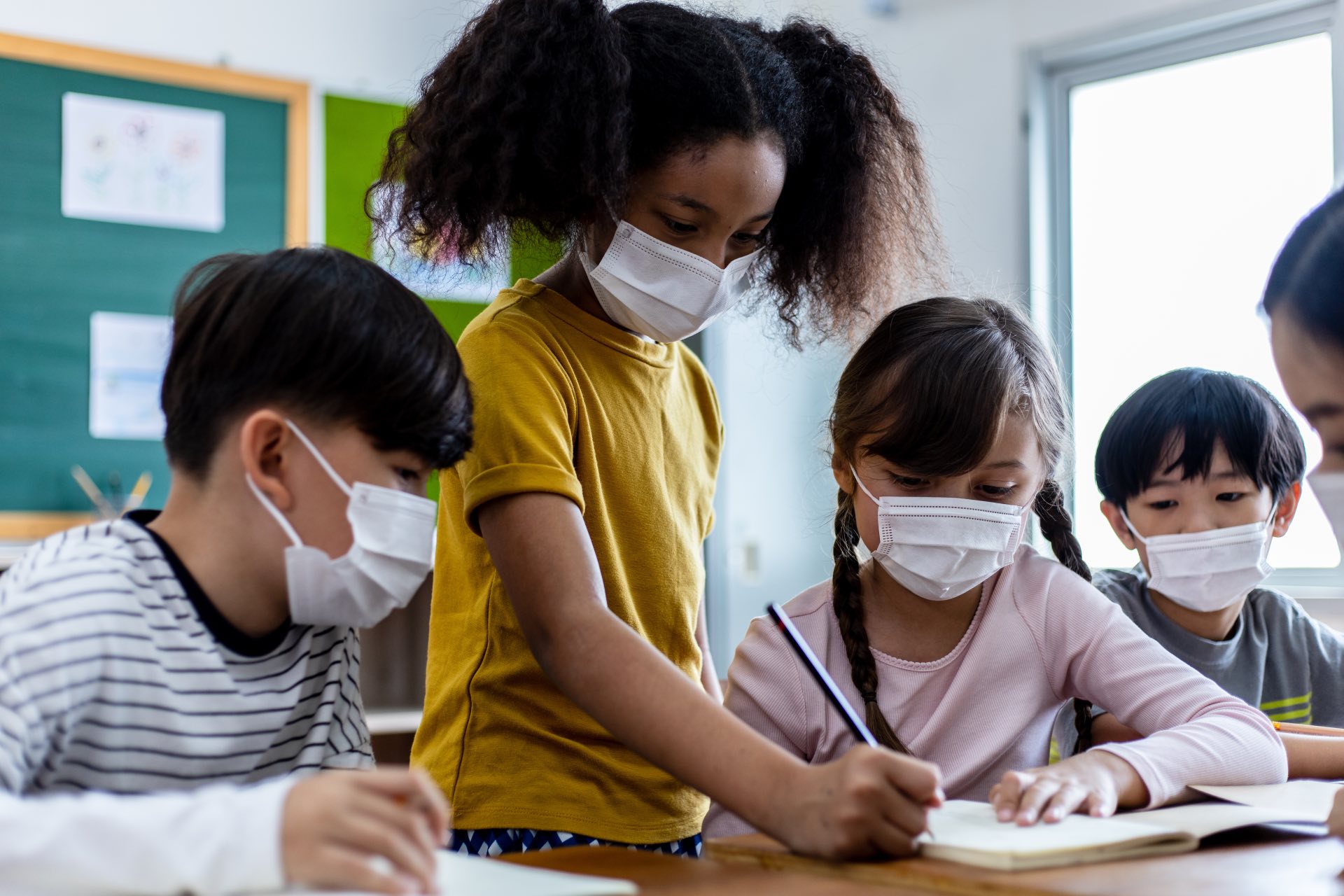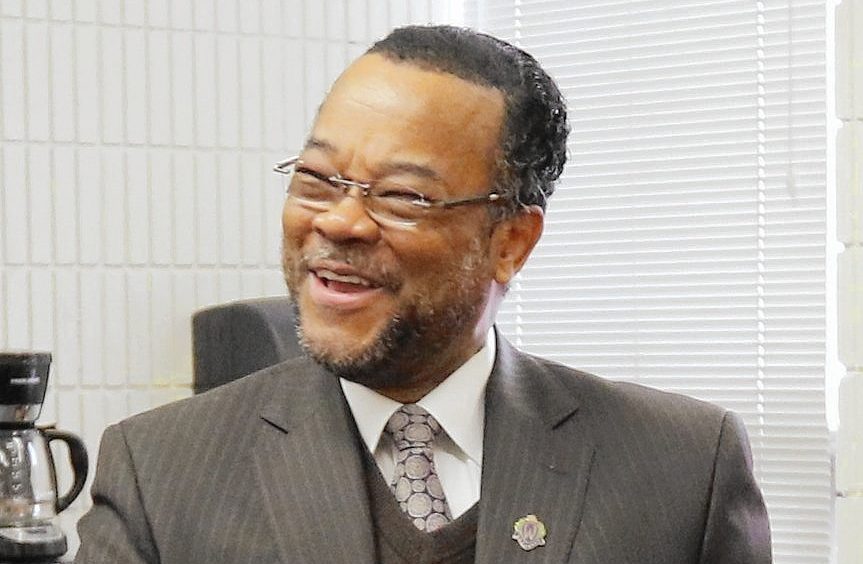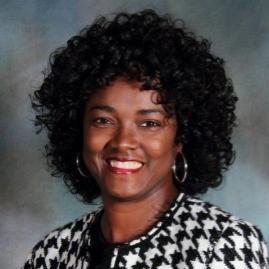Summary:
In March of 2020, the landscape of America’s colleges and universities changed permanently with the greatest health crisis in generations. The coronavirus is a deadly health concern, as of October 2020, COVID-19 has stricken more than 3 million Americans and cost over 200,000 thousand lives. Relative to higher education, advancing from face to face to remote instruction has impacted the multiple roles and responsibilities, instructors and professors find themselves.
Due to the abrupt shift to online, faculty, department heads, coordinators and deans’ from colleges and universities were forced in a matter of weeks to find innovative and flexible strategies to adjust to students who were assigned internships, practicum experiences, student teaching, and with remote instruction. Testimonials of four such researchers during these unprecedented times will be shared.
ABSTRACT
This proposal will highlight findings of research conducted by four African American female professors from different universities in the state of Louisiana. perspectives of multiple teaching remote teaching platforms pertaining to their teaching responsibilities. The impact of this interruption eliminated the structured professional environment of teaching, advising, research, and service that was once existed. Institutions are now implementing new guidelines and structures in every aspect of higher education.
Statement of the Problem
In March of 2020, the landscape of America’s colleges and universities changed permanently with the greatest health crisis in generations. The Coronavirus pandemic is a complex issue and as of July, COVID-19 has stricken more than 3 million Americans and cost over 200,00 lives. Teaching across the spectrum of higher education institutions were interrupted globally Pre-K to college students experiencing abrupt interruptions with internships, practicums, and student teaching. This has had an overall impact on teaching and the perspectives of multiple roles for professors and instructors in our society. Due to the abrupt shift to online learning, institutions are now in need to implement new guidelines, and teaching evaluations. It is imperative for faculty to have “a centralized sounding board for faculty to voice concerns, paired with transparent communication across organizational levels”(Rottenberg & Gruber, 2020), as it can shape the administration’s structural response”(Advice to Academic Administrators for How to Best Support Faculty during the Pandemic (Opinion) | Inside Higher Ed, 2020), “including department chairs and committees tasked with evaluating faculty, will ensure the effective implementation of those policies throughout the institution”( Rottenberg & Gruber, 2020). The first intent of the article will highlight the finding of the research conducted on Four African American female researchers from different universities, as the examined the perspectives of multiple teaching roles in the state of Louisiana during these unprecedented times. The second intent will focus and determine the impact of the interruption of a structured professional environment on teaching, advising, research, and service. “While the pandemic is challenging universities at many different levels, it is possible to respond to its impact on faculty while still maintaining a focus on equity”( Advice to Academic Administrators for How to Best Support Faculty during the Pandemic (Opinion) | Inside Higher Ed, 2020).
“Every outbreak provides an opportunity to gain important information, some of which is associated with a limited window of opportunity.” -Dr. Anthony Fauci, MD., 2020
PERSPECTIVES OF FACULTY TEACHING DURING COVID-19 ONSET
Introduction
America’s higher educational systems today are faced with many challenges: one of these is meeting the standards of faculty and teaching in a safe environment. According to Harvard University Professor Fernando Reimer, “This pandemic is likely to cause the most serious disruption to opportunity to learn globally in a century, widening already significant disparities in educational opportunity within and across nations” (Toward a Global Response to COVID-19, 2020). All college students, high school, junior high, elementary students, as well as Pre-K children are disheartened by much of what has occurred in their schools, colleges and universities impacting all of America (Anderson, 2020). Educational interruptions created an environment where professors in institutions of higher learning were challenged to assess pedagogy, the methods of teaching, advisement, and overall instructional methodology from a new and innovative perspective. As study conducted by Times magazine, interviewed teachers across the US in 2018, as rise of protests for wages were sweeping the nation. “Two years later, as educators face an entirely new set of challenges caused by the coronavirus pandemic, we followed up with these teachers to see how they’re preparing for an unprecedented school year” (This Is What It’s Like to Be a Teacher During the Pandemic, 2020). A teacher from Oklahama wrote in Times Magazine, 2020 as a part of the study, “My colleagues and I have been stressed since spring break because we care, and we’re worried and we know the ins and outs of our jobs, and we know that what the CDC is recommending for in-person learning just isn’t really feasible, considering the lack of funding that we’ve had for a decade”( This Is What It’s Like to Be a Teacher During the Pandemic, 2020). Another educator was reported saying, “I am teaching in an empty classroom, and it’s kind of sad”(This Is What It’s Like to Be a Teacher During the Pandemic, 2020). “This sudden shift in “The New Normal” transcended teaching in a new way that will be evaluated, analyzed, and studied for years to come. According to Fernando Reimers, Global Education Innovation Initiative at the Harvard Graduate School of Education, (Toward a Global Response to COVID-19, 2020) “leaders of public and private education institutions” are putting “in place alternative methods for students and teachers to continue with their lessons when attending school is not possible and are working on methods that will make schools fit for working in a safe environment”( Toward a Global Response to COVID-19, 2020). Teachers, faculty members from colleges and universities were forced in a matter of weeks to find innovative and flexible strategies to adjust to students who were assigned to internships, practicum experiences, and student teaching across the United States. This article will further focus on educators and their testimonials during these unprecedented times.
COVID-19 Problem
To better understand the turmoil teachers have been going through we first must understand the problem with COVID-19 pandemic. The latest threat to global health is the ongoing outbreak of the respiratory disease that was recently given the name Coronavirus Disease 2019 (Covid-19). Covid-19 was recognized in December 2019. It was rapidly shown to be caused by a novel coronavirus that is structurally related to the virus that causes severe acute respiratory syndrome (SARS). This threat caused interruptions for students in various programs in academia to stop, change, and adjust their academic studies which involved in an increase in reported illnesses such as anxiety and depression.
According to Karlovitch Assistant Editor of The Pharmacy Times (Karlovitch, 2020) and a new study published in the Journal of the Medical Internet Research, “During the initial coronavirus disease 2019 (COVID-19) outbreak, college students were more depressed and anxious than they were during similar time frames in previous academic years” (Karlovitch, 2020). Furthermore, according to the World Health Organization, “College students, many of whom are already stressed, reported an increase in depression and anxiety during the initial outbreak. Similarly, a study published by Dartmouth College observed “a notable increase in self- reported symptoms of anxiety and depression during the onset of COVID-19” (Karlovitch, 2020). Therefore, educators are not only focusing on their teaching, but also are fearful for the lives of their students and the strong negative effects the pandemic has on them. Through the reported time frame “major policy changes, such as the switch to remote learning, took place” (Karlovitch, 2020).
“The latest study from the Well Being Trust, a nonprofit foundation, estimates that COVID-19 may lead to anywhere from 27,644 to 154,037 additional U.S. deaths of despair, as mass unemployment, social isolation, depression and anxiety drive increases in suicides and drug overdoses”( Rottenberg & Gruber, 2020). The time is now, to study, and inform the general public of the strains that the academia is feeling during these unprecedented times. The research will further show, that educators are utilizing their resources the best they can to provide. “Peer programs have great flexibility; after orientation and training, peer leaders are capable of helping individual clients or groups, in person, online or via the phone. Initial data shows these approaches can successfully treat severe mental illness and depression” (Rottenberg & Gruber, 2020). Due to this, educators are asked to change their whole curriculum and to leave their comfort zones of an established work routine, which further effects their daily lives and how they have been teaching previously to COVID-19.
Narrative Themes and Demographics:
Each of the themes derived from the narratives are lived experiences of the faculty and are based on pure and honest observations based on various teaching styles, learning strategies, university flexibility in teaching modules, pedagogical strategies, commonality and extraordinary commitment to student success. The ability to serve, work, commune, research and collaborate within the members has allowed for an increase of professional presentation, manuscript, book chapter reviews, mentorship coupled with publications. The overall enhancement of shared teaching styles during and before the Pandemic and the protests during the Pandemic garnered an extraordinary bond of cohesiveness that increased productivity from weekly virtual meetings and ongoing teleconferences among the faculty members.
THEORETICAL FRAMEWORK
The Theoretical and Conceptual Framework for this study addresses the central question’s focus of exploring the impact that the onset of COVID-19 Pandemic had on the teaching experience. In this context, the theoretical focus is on Phenomenology Theory. The theory of phenomenology supports this study’s quest to acquire information from professors at three universities regarding their perception of how their responsibility to teach was impacted by the pandemic. According to Webb and Walsh (2019), phenomenology emphasizes the world as experienced by the person. It is referred to as a “practice rather than a system”. Phenomenology seeks to uncover the truth and describe experiences. Thus, the lived experiences of the targeted population and the reality and meaning ascribed to this experience is the focus of inquiry in phenomenology. Quotoshi (2018) specifies that phenomenology is not limited to knowing it is a source of intellectual engagement in which meaning is attributed to the world of individuals. Phenomenological approaches are more effective in describing the realities of a specified phenomenon. In essence it highlights the insights, beliefs, and motivation of the participants, which in this case are the educators in the target population. Phenomenology is the theory of choice when seeking to ensure that the experiences of a population is heard. Webb and Walsh (2019) specify that phenomenology is rigorous and that it attributes to the literature’s informed research.
The conceptual model for this study, as cited in Figure 1, depicts the educator’s application of teaching skills in the midst of the pandemic. The model reflects the educator as being the provider of educational services. It further identifies the student has seeking to acquire instruction in the midst of a pandemic. Initially, and as specified in Figure 1, the student is depicted as being outside of the continuum of educational services provided by the educator. The model implies that the educator is responsible for the continual delivery of academic services, even at the onset of a pandemic. The Pandemic, which is depicted as a larger rectangle is reflected as infringing upon the life of the student and educator, as well as on the acquisition of academic goals.
Figure 1:
RESEARCH QUESTIONS:
The study of focus is based upon the following research questions, that are answered by the interviewed professors in the following narratives.
1. As a faculty member teaching during the COVID 19 pandemic what were your experiences? Explain your experiences.
2. Did you experience any challenges as a faculty member as a result of the COVID-19 shut down in March 2020 what where your experiences? Please Explain.
The answers to these questions are provided below in a personal narrative format. These are the words of four professors, who were faculty members and that are and have been teaching during the COVID-19 pandemic.
NARRATIVES OF PROFESSOR A, B, C, and D.
The Story of Professor – A
This pandemic is unprecedented because it affected people internationally at the same time. Here I share my experience of how COVID-19 impacted me as an academician. I am a current professor in a counseling program accredited by the Counseling Accreditation for Counseling Related Educational Programs (CACREP). This past spring of 2020, the educational system has been ultimately changed due to the COVID-19 pandemic.
I teach on a quarter system in a counseling program accredited by Counseling Accreditation for Counseling Related Educational Programs (CACREP). Our Spring quarter began in early March of 2020. Within one of my courses, students are to demonstrate multiple basic counseling skills such as attending behavior like eye contact and body language, active listening, reflection, and summarizing. The feedback the received is from me, their instructor and peer to peer review. The curriculum requires the students to attend one counseling session with a licensed professional counselor during the quarter. Internship and Practicum requires field experience. As the spring semester began a few short month later due to COVID-19 everyone was quarantined. All classes that once attended through in person learning where to be conducted via the internet.
We were not to go on campus unless it was absolutely necessary. We also had to work from home remotely with office hours, attend department meetings, advise, and conduct interviews for prospective new students via Zoom.
I had to revamp just about everything. I had to revise the syllabi. I had to make exceptions to things that generally were not acceptable. It was frightening to know that most sites were closed so students initially could not obtain hours and I had a student scheduled to graduate that quarter. For the Techniques course I had to allow the students to record their skill demonstrations via Zoom. Trying to assess attending behavior such as nonverbal communication (eye contact, proximity to each other, body language) virtually is difficult if not impossible. Some students had internet issues so their sessions would cut off and then they would try to resume where they left off.
When listening to their taped sessions, some parts were difficult because they were required to wear masks. I had another student who wanted to go but feared contracting the coronavirus. The student who was graduating remained at the original site but conducted online sessions. The clients at this particular site were university students and most went home during the pandemic, therefore sessions were limited.
In the interim when students could not find clients, I assigned students from my Techniques course who were willing to help out. Some were hesitant but counseling was a part of the course. Meanwhile in a listserv that I am a member of, there was ongoing debate about what universities were doing with students, namely allowing a pass/fail option versus a letter grade, and CACREP’s refusal to allow practicum and internship students to count hours that were not with “real” clients. There were colleagues who warned against students going to sites to gain hours and threatening their safety. Other colleagues suggested that we recommend students drop and retake the course the following quarter. It was a lot to contend with and there were not any real answers. It was frustrating to respond to students’ countless questions with “I don’t know”.
It felt like working overtime because faculty, staff, students, and family wanted everything immediately. Being pulled in so many directions I had to remind myself to stay calm and practice self-care, which I often stress to my students. I had to get used to having pets, babies, and spouses present during class in our new normal of remote instruction. I also had to get used to not seeing students’ faces when they preferred to use the “stop video” to disable their camera. As the pandemic continues, so does remote learning. We are adapting, learning, and growing together through this pandemic, as we juggle children, homeschooling, and remote teaching from the same location. Our homes.
I began to utilize Zoom in a personal constructive way. In addition to communicating with students, I connected with friends and family in a new way. I created Conversations with the Counselor and I invited those that wanted to discuss various issues, some COVID related to come together virtually. It was therapeutic in many ways because people realized that they were not alone. We were getting used to practicing social distancing, but it did not mean we had to lose connection with others. People wanted and needed encouragement to remain helpful in such unprecedented times. We had to find the silver lining behind the clouds. More studies need to be conducted, as they will further help establish necessary resources, we as teachers need.
The Story of Professor – B
Being a news buff, when I first heard of the coronavirus, it was reported in Wuhan, China, in late December. I remember thinking, if it is there and spreading so fast, it is a matter of time before it hits the United States. Although, no one in this country took it seriously at first, it was perceived by many as “just another virus” like the flu. When it manifested itself in this country and people began contracting it and dying at an alarming rate, after thinking about family, I immediately thought about my classes.
At that particular time, I was teaching two undergraduate level courses and a doctoral level course. The format for the doctoral course was hybrid. Therefore, the transition to adapting to online was no problem. However, the problem came with the undergraduate level students. They were unaccustomed to online/remote instruction. With that being the case, most were not ready for this new method of learning and being assessed which posed a horrendous challenge for me. Attempting to teach undergraduates remotely and realizing they were not disciplined enough for this independent instructional approach caused not only major problems for me but the administration as well. It was imperative for a new system to be created in a hurry to try to remain in control of the coming “new normal.” Not only was this impacting student but faculty there was a severe impact on the faculty. Those unaccustomed to teaching remotely were required to take a series of online training courses to become knowledgeable about the different platforms that could be used in remote instructing and assessing.
Not only was teaching and assessing undergraduates a challenge but, so was grading. I asked the question, should I be more lenient in my grading for those not demonstrating success in the course or assign the grade they actually made? My ultimate decision was to assign everyone a passing grade although, not all of them passed the course. To me, this was the best way to handle the grading because the university decided that because of this “new” way of teaching and testing, students could appeal the final grade assigned by the instructor and more than likely, win the appeal.
For me, the idea of this pandemic and its dreadful, deadly impact is a reminder that humanity is witnessing moments of extreme uncertainty and an unprecedented global health crisis. Although it is impossible to foresee where this pandemic is heading, certainly, a new chapter in our history has just begun.
The Story of Professor – C
The nightly news from January 1, 2020 – March 15, 2020 featured stories about this new and mysterious upper respiratory virus called Coronavirus (COVID-19). The students discussed in my land-based classes and online classes in the weekly conference call discussions as we towed with how COVID-19 was not impacting children or young people, but the elderly was contracting the virus and many were fatal. The hospitals were beginning to prepare for a nationwide pandemic. In shock, many of my students in the Internship Class were terrified as they had just been placed in various childcare facilities, schools and agencies throughout North Louisiana. I assured all my students that the university would notify them soon about plans for the remainder of the semester. Governor Jon Bel Edwards on March 15, 2020 made the formal announcement that the state of Louisiana was behind the state of New York in declaring a State of Emergency and everyone was ordered to be on lockdown for the remainder of March until March 31, 2020. My department chair and I discussed how to make the transition seamless for the students and prepared a plan of action for our FCS students to do their work online. The silver lining in this entire story was that our FCS program has a myriad of courses that are taught online, so the transition from land-based to online courses was automatic and engaging. Our students were very knowledgeable in navigating the online management system of Canvas. We continued our daily coursework and weekly sessions as if things were normal. However, the students knew things were not normal and they discussed in Canvas on a weekly basis and I incorporated comments and reflections into our weekly Internship Conference Calls, which I always ended with a positive quote, as we were and continue to be living in the unknown, with a hope for a better tomorrow.
“It is through our struggles that we gain our victories” – Dr. Atty. E. Faye Williams
“This too shall pass”
“It’s O.K. to not be O.K.” –
“You are your best thing” – Toni Morrison
“You are the kings and queens” – LeBron James
“Educating the mind without educating the heart, is no education at all”- Aristotle
“When faced with a challenge look for a way, not a way out”
Some of recurring themes from students’ experiences with COVID-19 are captured below:
“I need to know what is going on and when we will come back to campus”
“Will I graduate; will we have a graduation. I am really disappointed about all of this”
“We really cannot do anything about this – at all”
“This is scary, really scary”
“My children are with me all day and I am so frustrated.”
“I really don’t know if I am going to have a job – we all had to just go home”
The Complete Lockdown of the U.S. Economy due to the Coronavirus warranted a closer view of the impact on my students below:
“I am out of work now and don’t have anything to look forward to”
“This is not fair. I worked so hard to get to this point and now this”
“God will see us through”
“I am just trying to hold on and graduate and get a job.”
Over the next weeks and months and as time passed on (April – June, 2020), the horror for some students compelled me to observe closely and paying attention to their ongoing comments and voices about how they had been impacted by the Coronavirus:
Some in my classes:
1. Some lost their jobs.
2. Some of their spouses lost their jobs.
3. Some lost family members to COVID-19.
4. 3 students even contracted COVID-19 while attending my class.
This was a very difficult semester and during this time it was even more challenging to keep the class going, the students motivated, but I persisted to the end of the semester and even into registration for the Summer and Fall sessions.
I found myself having multiple roles as the Instructor of Record, teacher, mother-figure, pastor, friend, mentor, counselor, encourager, motivator, and coach. While I always value my time as their instructor, I found myself with an added intentional focus on ensuring that they were well – educationally, personally, mentally, socially and professionally. The movement of re-opening the economy was uplifting as I sent the Stimulus information and Cares Act Information to my students and encouraged them to apply for any aide that they were eligible for. The time passed quickly, but as we move to plan for the Fall 2020 and Spring 2020 semesters, I am confident that my students will prevail. These Unprecedented times enforce the following quotes of wisdom. “NEVER GIVE UP” and “You Must Be The Change You Wish To See in the World” – by: Gandhi.
The Story of Professor -D
I still clearly remember the first news reports that I heard about the virus, that is infamously known as COVID-19. Within weeks those initial reports turned into morbid accounts of deaths associated with the rising number of cases. Watching those news reports were a part of my lesson plan development for the upcoming week. As an alumna assistant professor at a HBCU, I wanted my students to be prepared and armed with current information to make an impact on individuals, groups, and communities. Therefore, the importance of visiting credible news outlets was ingrained into the educational process. There was always time to discuss a trending story, and eventually the discussion would lead to identifying the implications for social work practice, my field of study. In preparation for a practice class held in late February, I opted to visit the Centers for Disease Control website and pull an infographic that detailed strategies to prevent COVID-19 virus infection spread. My targeted learners were my master-level practice students. The majority of those students were engaged in field education course work, which is commonly called an internship. The students were attentive and fully engaged in the discussion. Some even voiced plans to share the content of our discussion with their field supervisors and clients. Two students even agreed to make a COVID-19 prevention informational poster, that was displayed in the student computer center. However, we did not know what changes were in store, but time would definitely unravel a new story.
Keeping with my daily schedule of watching CNN reports, the reports began to surface that universities were leaving their campuses and shifting to online instruction. I knew that changes were coming, and indeed they did. A received an email that students were being instructed to leave campus and professors would be meeting to discuss educational goals for the remainder of the semester. The instruction was to prepare for 100% online instruction. As a program director, I received a few calls from students regarding the lack of technological equipment. Referrals were being made to fulfill this need so that academic goals could be met without interruption. Additionally, all students engaged in field education courses were pulled from their placement. Agencies with little awareness regarding this virus were closing, and there was no reopen date in sight. In our first departmental meeting and signing of telework assignments, some faculty said that this would pass and we would be back in a few weeks or early summer. Some seemed to be able to tell the future, because they alluded to the fact that it would probably get worse before it got better. Nevertheless, the team rallied together. Those instructors that were savvy in developing online courses helped those that had never engaged in the process. The environment was filled with a spirit of reciprocal learning. I am truly grateful to work in an environment where others share their expertise with such vigor. However, there was still more to deal with. How were our learners taking this shift in the educational process?
For some students, the transition was easy, whereas others talked about a sudden culmination of roles. This culmination of roles was especially voiced in the life of nontraditional students that were faced with care of family, work in some instances, and now navigating the online classroom. In some instances, anxiety levels rose and words of encouragement were extended as a means of support. The academic world had suddenly changed, and I (with my students) was in the midst of a pandemic. The life lessons were infiltrating my day to day life. I realized the importance of stressing that all students purchased internet accessible devices with webcams and microphones. In the classroom, the webcam provided that face to face contact that was needed to truly engage learner’s acclimation to this new process. Furthermore, staying abreast of faculty training in technology was of the utmost importance. Knowledge of platforms like Teams and Zoom were vital in the quest to stay connected. I was so thankful that I had embraced technology training opportunities when they became available. Indeed, this learning premise was shared with my students to promote cutting edge skills in a society that was sure to embrace technology as a means to stay safe.
As the weeks passed, students adjusted and seemed to approach life with respect for the “new normal”. Some stated that life had not unleashed its demands on them and that they would have to weather this storm. As an educator, I too had to adjust. My technology skills were being sharpened and the process was quick. I was also faced with sharing my skills set with others and they shared their skills with me. My home had suddenly become my office and my classroom.
My new office had a television that was saturated with stories from mayors, policy makers, and other political leaders about the impact that COVID-19 was having on the world. In some instances, I had to take breaks from these ongoing news reports were words like death and COVID-19 were routine. My task to prepare social workers to meet the challenges that would be issued in years to come were now more important than ever. Teaching during COVID-19 has its challenges, but this road of uncertainty is met with hope for the academic future. I envision a future that prioritizes student academic success and the professional development of faculty to meet the demands of the “new normal”.
Results
The results and the testimony of the four professors revealed that while the COVID-19 pandemic brought about much uncertainty and hesitation, it also brought about the possibility for advancement, positive change in the lives of both the professors and the students. The stories told within this article similarly correlated to the stories told by Time Magazine (2020), as one teacher wrote to Time “There won’t be assemblies or pep rallies. The marching band season has already been cancelled. Everything that makes kids like coming to school is just gone. I think maybe kids and families have in their head that it’s going to be like before COVID. But it’s not going to be anything like that” (This Is What It’s Like to Be a Teacher During the Pandemic, 2020). This sentiment is shared, in particular with the academia professionals, teaching courses whose practicum/internship courses are normally administered face to face and inside non university facilities and organizations.
More importantly (or of most significance), most students (and who relied on physical/face to face communication) revealed to professors that they were struggling emotionally trying to deal with the transition of the new course format as well as their at home situations that were also negatively impacted by COVID (e.g. family members, juggling jobs, loss of jobs, etc.). These negative effects eventually spilled over into the personal lives of the professors as well. To most significant findings from the perspectives is the obvious emotional toll experienced by all of the professors teaching during the spring semester. “It’s just an awful situation to be in” (This Is What It’s Like to Be a Teacher During the Pandemic, 2020).
Aside from the additional work tasks being placed upon them by university mandates and course reformatting (e.g. syllabus and canvas/online training, regrading etc.) issues, all of the professors reported feeling the added strain or pressure of having to “make it work” and “going the extra mile” to make certain that all students were not only placed (e.g. writing letter or making extra As one professor stated, “I had to reassure every student after every virtual meeting that IT IS OK TO NOT BE OK.” This mantra became important not only for the students, but for the professor as well, because who is there at the end of the day when we need to express our frustrations or be reassured that others care for our well-being also.
The light at the end of the tunnel can be visualized when we see a picture of professors who now have more contact with students individually then they ever have before. The closing of offices and classrooms prompted professors to engage the students both socially and academically more often via phone and online environments. Although professors report experiencing more frustration and stress than in previous semesters, it was observed that the majority also felt a sense of accomplishment for being able to alleviate the constant fears of the students while also becoming more connected to their own family and friends via zoom or other online networking applications for which they sought relief. It is reported by the majority of the professors that the new teaching format forced them to learn new and more innovative ways to interact with students outside of traditional methods. This meant brushing up on the latest technological advancements and computer software.
Conclusions and Recommendations
This study was designed to examine the four faculty members’ lived experiences, reflections, and perspectives of teaching during the pandemic caused by COVID-19. In describing their continuous growth and continuity during this transitional time in higher education in the United States, this study captured their innermost thoughts and experiences of teaching, advising, mentoring, and motivating their students to succeed in these most trying and overwhelming times during their internships, practicums, and student teaching. The underlying factors of teaching, advising, research, and service were not faltered as a result of the Pandemic according to all of the participants in this study. The underlying premise in all of the narratives is that all of the faculty members remained structured and worked toward success even during this unprecedented time of turmoil, transition, and uncertainty. As one teacher reported to Time Magazine 2020, “things that I feel are central to my classroom community and what gets students to trust me enough to ask for help. I am afraid of students just sitting there in silence for 30 school days and not knowing how to make it better. There is nothing I can do to force them to participate. We’re preparing to revamp our curriculum, so that it’s a lot more responsive to the students” (This Is What It’s Like to Be a Teacher During the Pandemic, 2020). It is the time now to focus and acknowledge that things are not as they used to be. Today we need to focus on different solutions as the pandemic continuous. “Expecting the same output as in previous years, even though many people have less time and more stress than ever, is not a sustainable or humane solution. The world is not normal—so the way we do science cannot be normal either” (Academia Needs a Reality Check: Life Is Not Back to Normal, 2020). The participants all recommend that faculty in higher educational institutions seek mentors to help them navigate the Academia, by working together in small learning groups.
References
Grubic, N., Badovinac, S., & Johri, A. M. (2020). Student mental health in the midst of the COVID-19 pandemic: A call for further research and immediate solutions. International Journal of Social Psychiatry, 002076402092510. https://doi.org/10.1177/0020764020925108
How a New College President Views the COVID-19 Crisis – EdSurge News. (2020, April 15). EdSurge. https://www.edsurge.com/news/2020-04-15-how-a-new-college-president-views-the-covid-19-crisis
Advice to academic administrators for how to best support faculty during the pandemic (opinion) | Inside Higher Ed. (2020). www.Insidehighered.com. Retrieved October 10, 2020, from https://www.insidehighered.com/advice/2020/09/04/advice-academic-administrators-how-best-support-faculty-during-pandemic-opinion
Karlorvitch, S. (2020) COVID-19 Pandemic Has Major Impact on Mental Health of College Students [Review of COVID-19 Pandemic Has Major Impact on Mental Health of College Students]. https://www.Pharmacytimes.Com/Ns/Covid-19-Pandemic-Has-Major-Impact-on-Mental-Health-of-College-Students; Pharmacy Times
Toward a Global Response to COVID-19. (2020). Harvard Graduate School of Education. https://www.gse.harvard.edu/news/uk/20/04/toward-global-response-covid-19
Miller, J. (2014) “The Effectiveness of the Critical Friends Model for Teacher Collaboration”. Capstone Projects and Master’s Theses. 587. https://digitalcommons.csumb.edu/caps_thes/587
Qutoshi, S. B. (2018). Phenomenology: A philosophy and method of inquiry. Journal of Education and
Educational Development, v.5 n1, pp. 215-222. https://files.eric.ed.gov/fulltext/EJ1180603.pdf.
Academia needs a reality check: Life is not back to normal. (2020, August 28). Science | AAAS. https://www.sciencemag.org/careers/2020/08/academia-needs-reality-check-life-not-back-normal
Rottenberg, J., & Gruber, J. (n.d.). Flattening the mental health curve is the next big coronavirus challenge. The Conversation. https://theconversation.com/flattening-the-mental-health-curve-is-the-next-big-coronavirus-challenge-139066
This Is What It’s Like to Be a Teacher During the Pandemic. (2020). Time. https://time.com/5883384/teachers-coronavirus/
Webb, A.S. &Welsh, A.J. (2019). Phenomenology as a methodology for scholarship of teaching and
learning research. Teaching & Learning Inquiry 7(1), pp. 168-222. https://search-ebscohost-com.grambling.idm.oclc.org/login.aspx?direct=true&db=eric&AN=EJ1213106&site=eds-live








